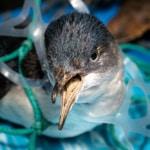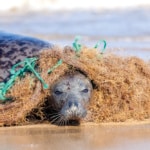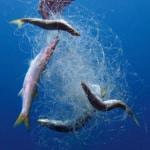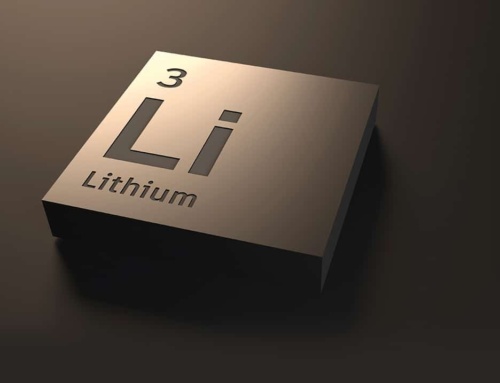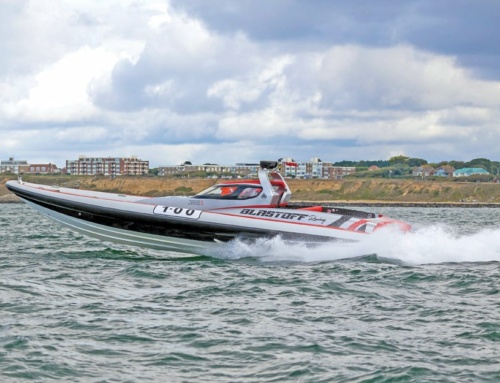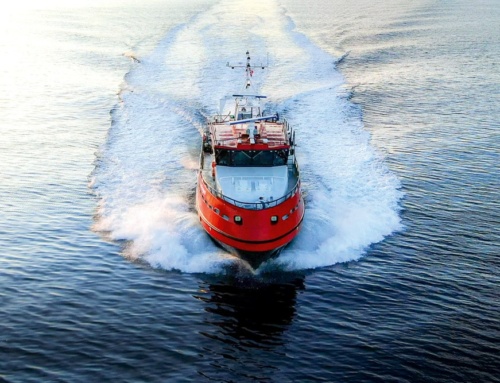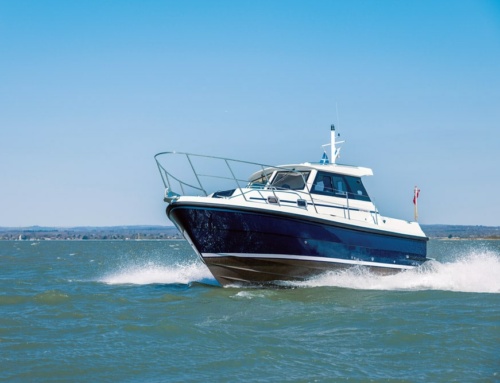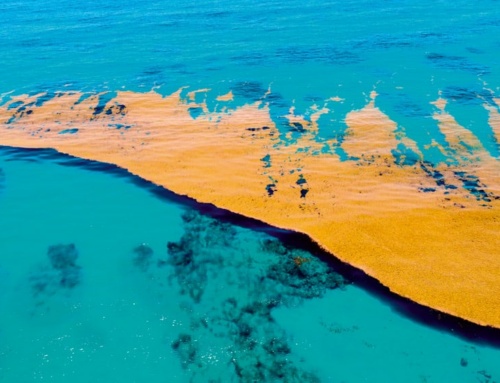Could hungry little microbes really help provide an answer to the plastic pollution catastrophe occurring in our seas? International marine biologist Giovanna Fasanelli enlightens us on the activity of these greedy saviours of the sea.
It’s just really complicated
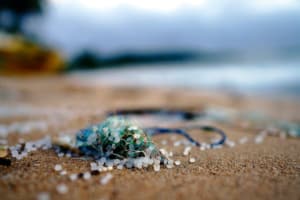
Plastic microbeads found almost everywhere
Let’s be transparent: plastic is our friend as much as it is our foe. There is little denying its practicality, flexibility and fit-for-purpose nature. It facilitates our everyday lives in so many ways. Just look around you now and marvel at its pervasiveness – you are most likely even wearing it! However, of the nearly 5 million metric tonnes of plastic products placed on the UK market every year, an estimated three-quarters become waste, making us one of the major contributors to global plastic pollution. (Interesting fact: the NHS is the largest consumer of single-use plastics in Europe, and a recent study published in Science Advances determined that the USA and the UK generate the highest per capita plastic waste values.) In light of this avalanching environmental catastrophe, an increasing number of manufacturers have been responding by converting their products and packaging to more eco-minded materials. However, many of these materials that are advertised as biodegradable or compostable require the kiss of Snow White’s prince to effectively and timeously decompose in ambient conditions before becoming a meal for an albatross, sardine, seal or turtle. (According to the European standard EN 13432, biodegradable plastics require at least 90% disintegration into tiny fragments after 12 weeks, and 90% biodegradation after six months, which means 90% or more of the plastic material will have been converted to carbon dioxide and the rest to water and biomass.) It really can be misleading to consumers who believe that their ‘environmentally friendly’ coffee cup will happily disintegrate no matter where it ends up when in most cases this is only truly achieved within the very particular conditions of temperature, humidity and aeration that are managed in dedicated composting facilities. Furthermore, the reality is such that only a tiny percentage of our eco-designed plastic waste makes it to these plants, which themselves are few and far between in many parts of the world. Biodegradable and compostable are good steps for industry to take, but as it currently stands, they are not going to spare our marine ecosystems, which are filling with plastic at the rate of one to two garbage trucks every single minute.
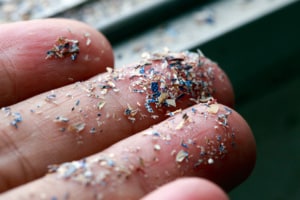
Close up of micro plastics
Recycling faces many challenges, and our methods for capturing, collecting and sorting recycling into types and categories remain among the greatest obstacles to achieving economic viability. These difficulties are reflected in relatively low rates of actualised recycling, despite the best intentions and access to resources. As it stands, the EU community manages to recycle just 29% of its plastic waste, while globally this figure drops to just 9% (https://www.oecd.org/environment/plastic-pollution-is-growing-relentlessly-as-waste-management-and-recycling-fall-short.htm). Compounding this issue are the different processes required to handle the variety of plastic types out there, and contaminants such as dyes and inks compromise the quality of the renewed plastic each time it is recycled. What this means is that the average juice bottle rarely becomes another juice bottle but is rather downcycled each time, until it eventually ends up as a discarded carpet tossed into landfill. And when the price of oil makes petrochemical products cheaper to manufacture than their inferior-quality recycled counterparts, the battlefield looks bleak indeed. But what if we could find a whole army of specialised soldiers to swarm from all directions and overwhelm the enemy like a nest of ants?
Sending our best … microbes
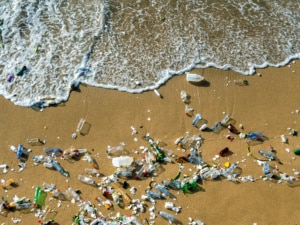
Plastic waste washed onto beaches every day.
Since manufacturing took off in the 1950s, over 8 billion tonnes of plastic waste has been generated, much of which is still with us today somewhere on the planet. Now we are seeing ever-increasing production, with over 400 million tonnes being produced annually, 50% of which is designed as throwaway/single-use products. Due to this rapid and unwavering production, we have inadvertently generated a whole new marine ecosystem known as the ‘plastisphere’, where unique and specialised microbial communities are thriving on the surfaces of plastic debris that ranges in size from microplastics less than 5mm in diameter to laundry buckets and old fishing nets. These communities are being carried further around the oceans and for much longer time frames due to the durability of their synthetic kingdom, and in turn are themselves affecting food webs in unexpected ways. But in an astonishing, darkly poetic twist, it is these microbial societies that microbiologists believe offer the most promising path forward in the war against plastic pollution. What is being uncovered is that microbes are adapting their digestive enzymes to break apart the carbon backbone of the commonly found plastic polymers, snipping them into smaller monomeric units that are then easier to metabolise. Linking up with global environmental DNA sampling projects, a recent study (https://journals.asm.org/doi/10.1128/mBio.02155-21) saw microbiologists isolating 30,000 microbial enzymes from ocean and soil samples that show the potential to degrade 10 different types of plastic. This is simply an astonishing finding and suggests that nature could be finding a way to eat plastic and return it to its constituent parts! But can the microbes decompose plastic as fast as we can dump it?

Hope in the microscope!
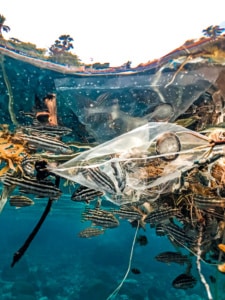 Similarly, back in 2016, some Japanese scientists uncovered a glimmer of hope while sifting through waste effluent from a bottle recycling plant: bacteria that were living off PET plastic bottles. By secreting specialised enzymes, the bacteria are able to break apart the polymers of this commonly produced plastic and sequester energy from the basic units (PET represents roughly 20% of plastics in the marketplace). By synthetically duplicating and adapting these enzymes in the laboratory, Professor John McGeehan and his research team at the University of Portsmouth are working towards creating a much faster-acting ‘super’-enzyme that can then be rendered into a powder to be poured over recycling waste, breaking it down into a monomer solution – the original building blocks we get from oil and gas to make virgin plastics. This solution can then be used to create materials as new, over and over again, thereby supporting the drive towards circular-economy ideals where waste is rendered redundant. This wonderful goal of widespread, large-scale industrial application is still years in the making – however, these are years we arguably do not have, and there are many pitfalls to consider.
Similarly, back in 2016, some Japanese scientists uncovered a glimmer of hope while sifting through waste effluent from a bottle recycling plant: bacteria that were living off PET plastic bottles. By secreting specialised enzymes, the bacteria are able to break apart the polymers of this commonly produced plastic and sequester energy from the basic units (PET represents roughly 20% of plastics in the marketplace). By synthetically duplicating and adapting these enzymes in the laboratory, Professor John McGeehan and his research team at the University of Portsmouth are working towards creating a much faster-acting ‘super’-enzyme that can then be rendered into a powder to be poured over recycling waste, breaking it down into a monomer solution – the original building blocks we get from oil and gas to make virgin plastics. This solution can then be used to create materials as new, over and over again, thereby supporting the drive towards circular-economy ideals where waste is rendered redundant. This wonderful goal of widespread, large-scale industrial application is still years in the making – however, these are years we arguably do not have, and there are many pitfalls to consider.
And what if biodegradable plastics were re-engineered, allowing them to break down naturally in the ocean where temperatures are so variable and on average too cold to adequately decompose our eco-designed waste? Researchers from the University of California Santa Barbara (UCSB) are probing this question with an answer stick. It turns out that polyhydroxybutyrate, or PHB, is a ‘microbial bioprocessed polyester’, that is, a polymer that is both made by certain microbes as a way of storing energy and one that is broken down by other microbes as a way of extracting energy! What is also rather nifty is that the microbes that degrade PHB naturally occur in the ocean, so what we have is a plastic that is made by some microbes and destroyed by others, all without the need for Prince Charming’s exacting kiss! The UCSB marine microbiologists, in collaboration with others, including Mango Materials (https://www.mangomaterials.com/innovation/#mangoLoopSection2), are hoping PHB can form the basis of a new class of truly ocean-biodegradable plastics and are testing their theory by creating oceanographic instruments and sensors out of this microbe-made polyester.
- Penguin trapped in plastic beer can packaging.
- Seal caught in tangled nylon fishing net.
- Ghost nets are fishing nets that have been left or lost in the ocean by fishermen. These nets, often nearly invisible in the dim light, can be left tangled on a rocky reef or drifting in the open sea.
Super-enzymes are no match for common sense
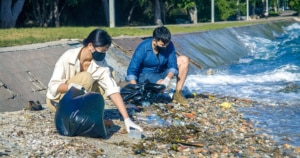
Two volunteers cleaning the beach. By collecting garbage on the beach. Garbage contributes to global warming and the greenhouse effect.
As fast as microbes are learning to consume plastic, it is simply not fast enough to combat the sheer volume of incoming pollution, even if we can create plastic-destroying super-enzymes. It is evident at the outset that no one solution will solve the problem we continue to create; every angle must be simultaneously tackled: from manufacture and decomposition, to reducing personal and industry consumption, to the capture and recycling of the discarded product. Everything must be done to ensure plastics are kept from entering the ocean, for once they have a chance to drift away, they become infinitely harder and more expensive to retrieve, especially as they break apart into bead-sized pieces. We all have a role to play in this story, and voting with our wallets is one powerful tool we can wield. As consumers, we should demand much clearer information about how to effectively dispose of our plastics and make sure our favoured manufacturers are doing all they can to reduce their pollution impact. Policymakers too must race to create stricter legislation that bans non-essential single-use plastics while encouraging breakthrough technologies throughout the supply chain. And with the help of our microbial soldiers, we may just be able to make effective strides towards truly cleaning up our seas.
Don’t just stand there!
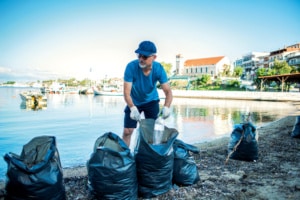
Volunteer cleaning beach.
One of the most impressive people to ‘do something about it’ is young Dutch inventor and school dropout Boyan Slat, who founded ‘The Ocean Cleanup’ at the age of 18, an NGO that now employs 120 of our brightest minds. The team are working to intercept debris in river systems before it reaches the ocean, as well as dredging it out of the open sea where so much has already accumulated, sucked into one of the five great ocean gyres. Many ‘macro’ plastics eventually end up as microplastics (> 5mm in diameter), which are so small that they are mistaken for morsels of food by planktonic animals. Moreover, these micro-beads attract pollutants to their surfaces, allowing toxic chemicals to accumulate up the food chain until they find your dinner plate. A 2019 study conducted by WWF International determined that we could be ingesting as much as a credit card worth of microplastic each week, and over a lifetime, we can be expected to have eaten 20kg worth of it! Capturing all sizes of plastic is a monumental design challenge to which the Ocean Cleanup team have boldly risen. They are into their second iteration of the ocean plastic catcher System 002 ‘Jenny’, while System 003 is already close behind and setting the stage for the big operation scale-up to tackle their goal: taking themselves out of business by removing 90% of ocean plastics by 2040. In their research on the source of ocean plastics, they have determined that just 1% of the world’s rivers, i.e. 1,000 rivers, are responsible for 80% of ocean plastics, and they have subsequently begun intercepting this debris using a consortium of different set-ups. The dedication to the task is unwavering despite unfathomable challenges. How fantastic to have such an innovative and hands-on organisation working, right now, to complement the other initiatives and frontier technological avenues currently being explored!
SUZUKI
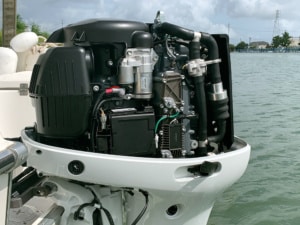 Suzuki enhances its environmental credentials with the development of the world’s first micro-plastic collecting device for outboard motors
Suzuki enhances its environmental credentials with the development of the world’s first micro-plastic collecting device for outboard motors
Suzuki has developed a world first innovation for its ultimate outboards, which is a device that collects micro-plastic waste whilst operating the engine. It collects micro-plastic waste from seawater that is pumped around the engine as part of its cooling system. The device can be easily installed and does not affect the engine performance since it only utilizes the returning water that has already been used to cool the engine.
Suzuki has been undertaking extensive testing around the world, including on the South West Coast of the UK. Results have shown that around 10 hours of boating produces an egg cup-sized container of material, which invariably comprises of approximately 10% wood chip, 10% organic material and 80% micro-plastics.
It is anticipated that the micro-plastic collection device is going to be available on selected new Suzuki outboard models and as a retro-fit accessory later this year. This innovation complements Suzuki’s existing Lean Burn technology which is on all its electronically fuel injected outboards. The Lean Burn Fuel Control technology predicts fuel needs according to operating conditions, then delivers the optimum fuel/air mixture to the engine, across the entire rev range. This means fuel-efficiency and range is increased as well as commercial returns being maximised.
Since 2011, Suzuki has been voluntarily conducting its annual “Clean-Up the World Campaign”, which comprises a series of beach clean activities around the world to contribute to a better marine environment. In addition to this, Suzuki is making efforts not only to gather plastic waste but to also reduce the plastic packaging from its products.
Pros and cons
As consumers, we should aim to eliminate single-use plastics from our daily lives as fast as possible while legislation and infrastructure catch up. Sending school buses out to landfill sites and composting plants will deepen the education our society needs on this very serious issue.
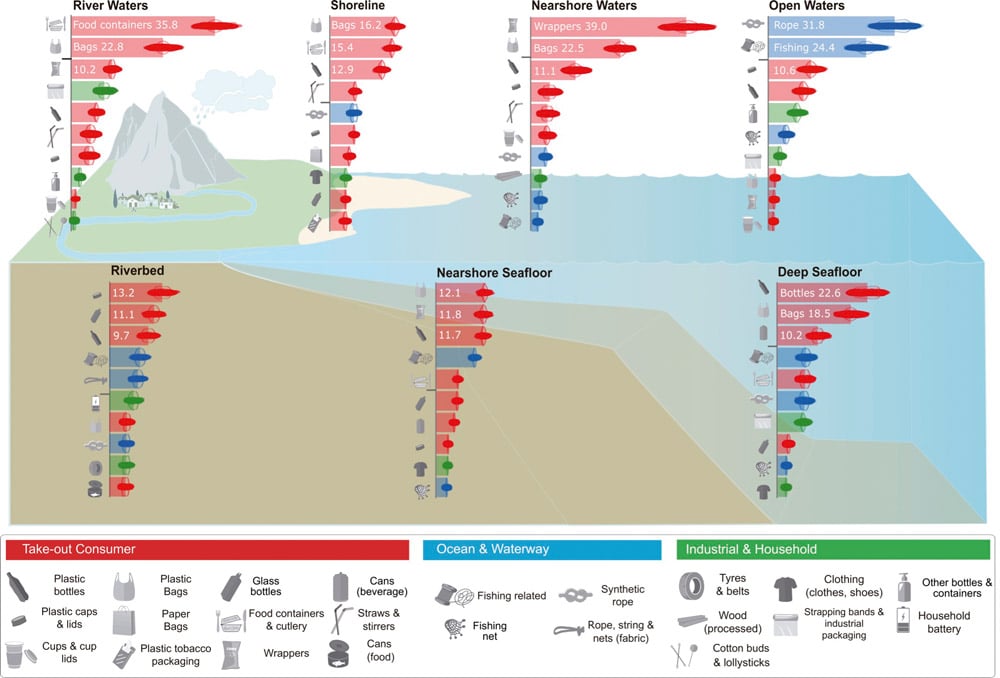
Top 10 litter items per ecosystem
This infographic illustrates how much of our consumer waste is at the heart of the pollution issue. The development and use of sustainable and greener materials in the boatbuilding industry is likewise critical. The use of non-recyclable GRP, as we know, is absolutely massive. The dumping of litter and polluting waste, not only by commercial operators but also by leisure boaters, is a problem that can be realistically checked if attitudes toward the water and our wider oceans are changed. Greater use of bio-friendly antifouling products is another area where consumer attention can be focused to drive further change. While the use of plastic components at this juncture would appear unavoidable, to their credit, engine manufacturers, especially those producing for the outboard market, have been refining their products for years now. Super-clean-burning 4-stroke engines are the accepted norm these days, and the discharges such outboards produce are a tiny fraction of what their older 2-stroke predecessors once produced. Companies such as Suzuki have even introduced inline microplastic filters into their outboard engine water-cooling systems. This is laudable work and delivers not inconsequential results. The growing interest in the use of hydrogen power and biofuels, and, of course, the take-up of electric propulsion and fuel extender technology, make it evident that the marine engine market is already on the move. As for the issues regarding how electricity is produced to recharge e-propulsion products as well as the difficulties associated with recycling end-of-life batteries, these are the subject of wider debate.
Read more
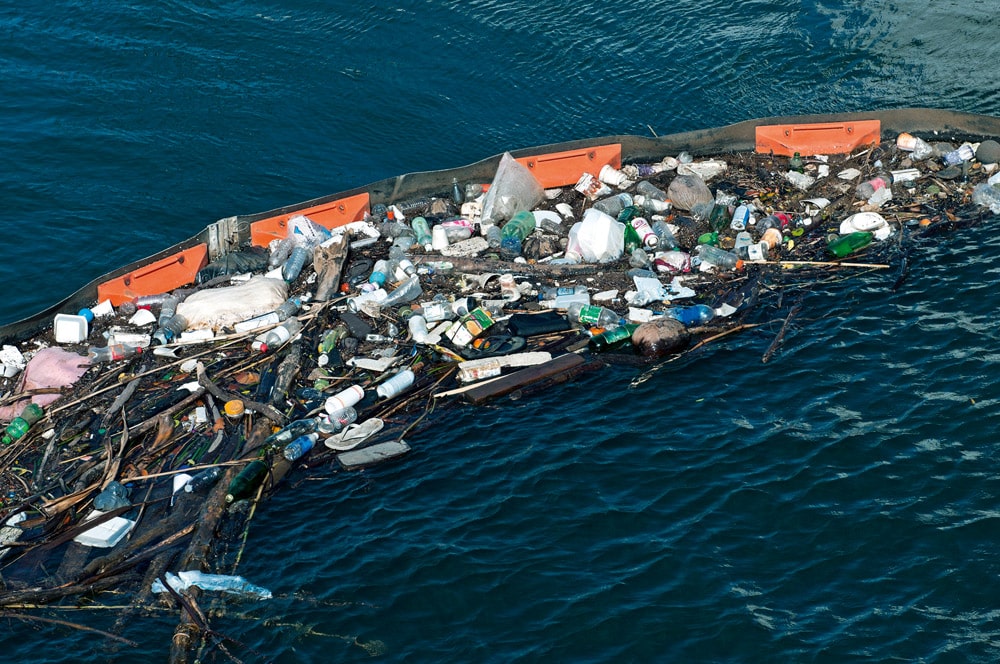
Barrier at end of Ala Moana Canal in Honolulu to prevent floating debris from entering Pacific Ocean


